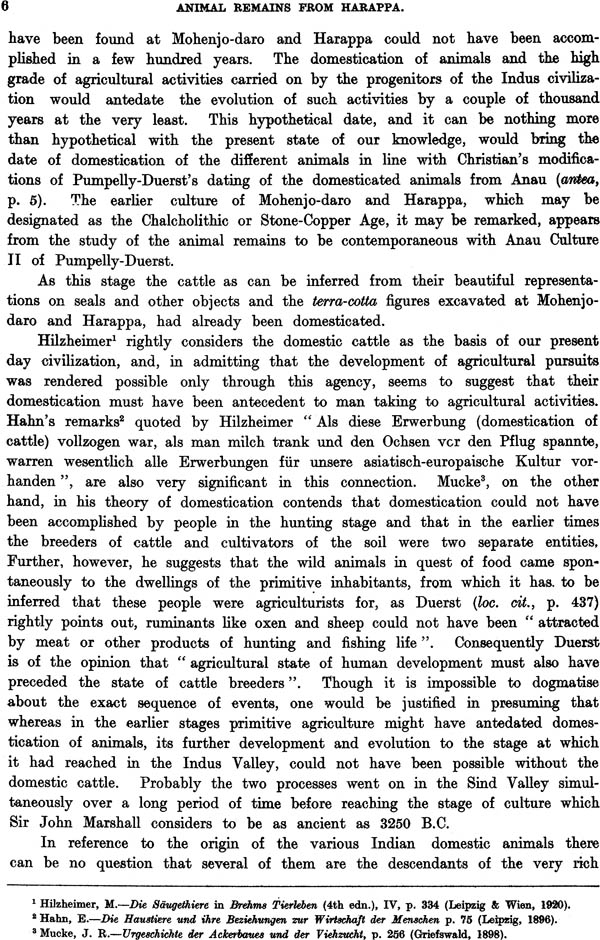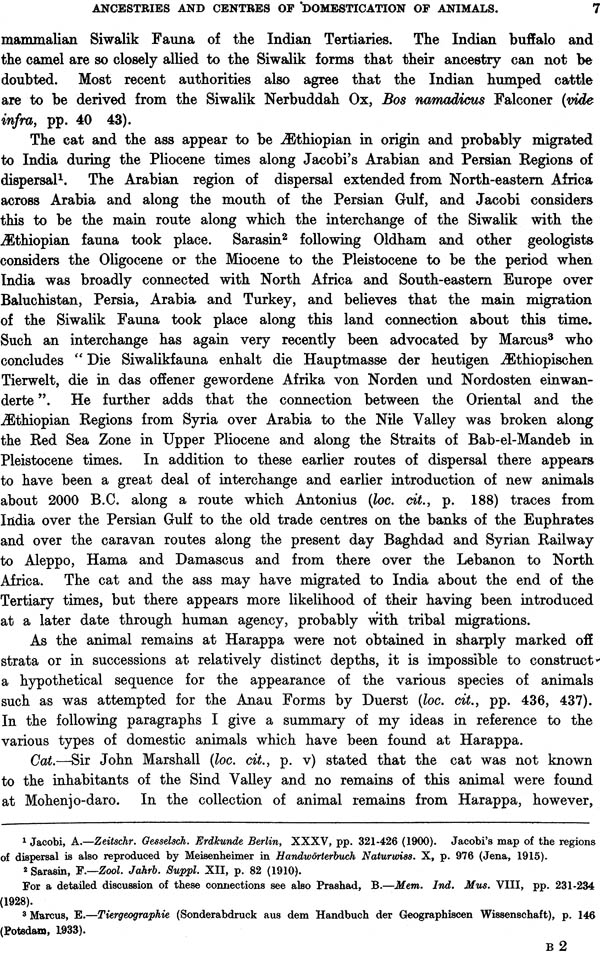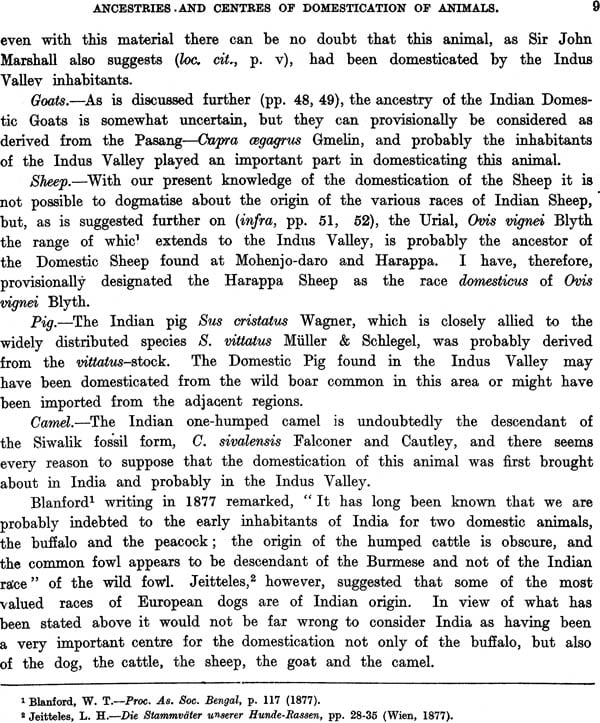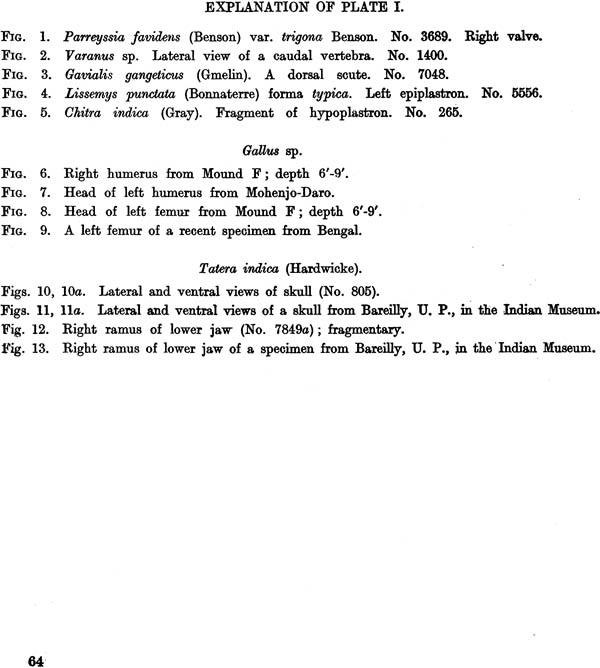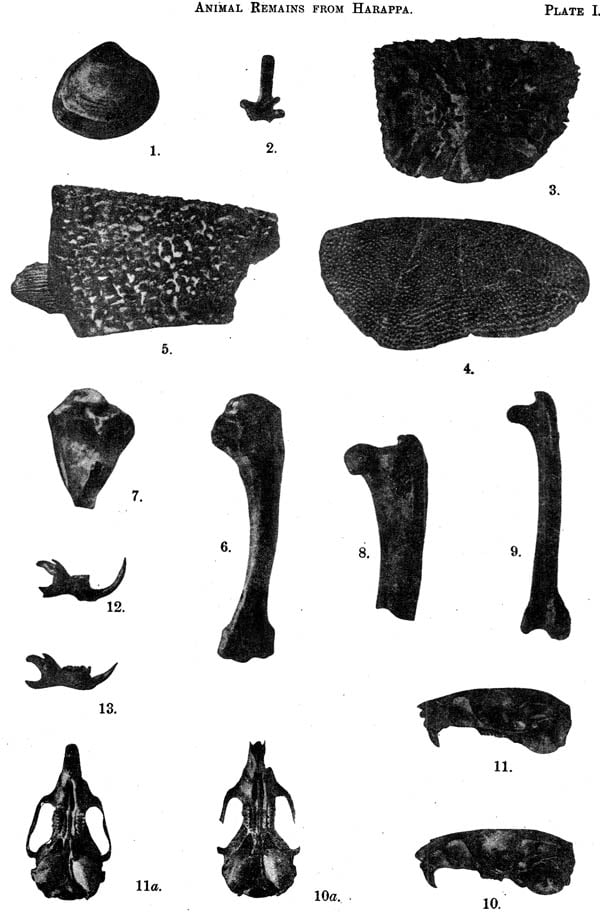
ANIMAL REMAINS FROM HARAPPA
Book Specification
| Item Code: | IDD806 |
| Author: | B. PRASHAD |
| Publisher: | Archaeological Survey of India |
| Language: | English |
| Edition: | 1999 |
| Pages: | 62 (B & W Illus: 83, Figures: 10) |
| Cover: | Hardcover |
| Other Details | 10.8" X 8.5" |
| Weight | 500 gm |
Book Description
The collection of animal remains from Harappa, on which the present report is based, was sent to the Zoological Survey of India in several consignments and Lt.-Col. R. B. Seymour Sewell, the then Director of the Zoological Survey of India, proposed to deal with this collection on the lines of his report on the animal remains from Mohenjo-daro. Owing to his going on the long leave and other circumstances connected with his premature retirement from the department, he was unable to deal with the collection and I undertook to report on the Harappa animal remains at the request of my friend Rai Bahadur Daya Ram Sahni, then Director General of the Archaeological Survey of India. The very short time allowed for the preparation of the report rendered the task very difficult, and it has involved a great deal of labour to review the extensive zoological, palaeontological, historical and archaeological literature on the subject and prepare a detailed account on the very large collection-almost four-to-five times the size of the animal remains from Mohenjo-daro - within the short space of less than 3 months.
The collection of animal remains from Harappa may roughly be divided into two lots: (1) Collections made under the supervision of Rai Bahadur Daya Ram Sahni during the field season of 1924-25 ; these are referred to in the report as "D. R. S. coll.," and (2) the extensive collections made during the seasons 1925-26, 1927-28, 1929-30 and 1930-31 under the supervision of Mr. Madho Sarup Vats, the officer in charge of the explorations at Harappa. The human and animal remains from Area G were excavated during the seasons 1928-29 and 1929-30 by Dr. B. S. Guha, while in the field season of 1930-31 the collections were made and preserved in the field by Messrs. H. K. Bose and S. Sarkar, who were specially engaged by the Archaeological Survey of India for carrying out the work of preservation of the human and animal remains under Dr. Guha's supervision.
In reference to the various sites, unfortunately no detailed plan indicating the exact areas where the collections were made has been available, and as I have not visited Harappa, I have had to rely on the old plan of the Harappa site published by Cunningham. In this plan Mound AB is indicated as not very far from the old bed of the River Ravi to the west of the present village of Harappa. Mound F has been described in the Annual Progress Report for the year ending 31st March 1921 by Rai Bahadur Daya Ram Sahni as "the northernmost mound on the site". This site, as the detailed lists in the report shows, yielded very extensive collections of animals remains form various areas. For a description of the Great Granary area, which also yielded extensive series of animal remains, reference may be made to Vats. The sites, Area G and Cemetery H, were not raised mounds like the Mounds AB and D, but low ground areas ; a description of these sites has recently been published by Vats. Further details about the various sites are not available, but accounts of these will presumably appear in the reports by the officers of the Archaeological Survey of India who were responsible for the excavations. In reference to the relevant details of these areas, Mr. Madho Sarup Vats writes as follows in a letter : "The human remains at Harappa come from mound AB, area G, and the cemetery H. Of these, mound AB is later than mound F, but the IVth stratum in the former in which the remains were found is roughly contemporary with the two upper strata in the latter mound. Similarly Area G is later than mound AB, and the Cemetery H, which is the latest, is later than Area G." The above information is unfortunately not detailed enough for a complete analysis of the animal remains from various sites. These remains are only casually mentioned in the various reports referred to above, and no detailed chronology of the sites is, so far as I am aware, available. As the remains were examined by me only after they had been treated with shellac for preservation, it is impossible to surmise the relative ages of the finds from the different sites. All that can be stated definitely is that most of the animal remains excavated at Harappa, except in some cases where the bones appear to be recent, are contemporary with the animal remains from Mohenjo-daro described by Col. Sewell.
| PAGE. | ||
| CHAPTER I. | Introduction | 1 |
| CHAPTER II. | Ancestries and Centres of Domestication of the Harappa Animals | 5 |
| CHAPTER III. | Systematic Description of the Collection - | |
| (a) Invertebrata | 10 | |
| (b) Vertebrata | 12 | |
| INDEX | 60 | |
| PLATES I-VII. | ||
